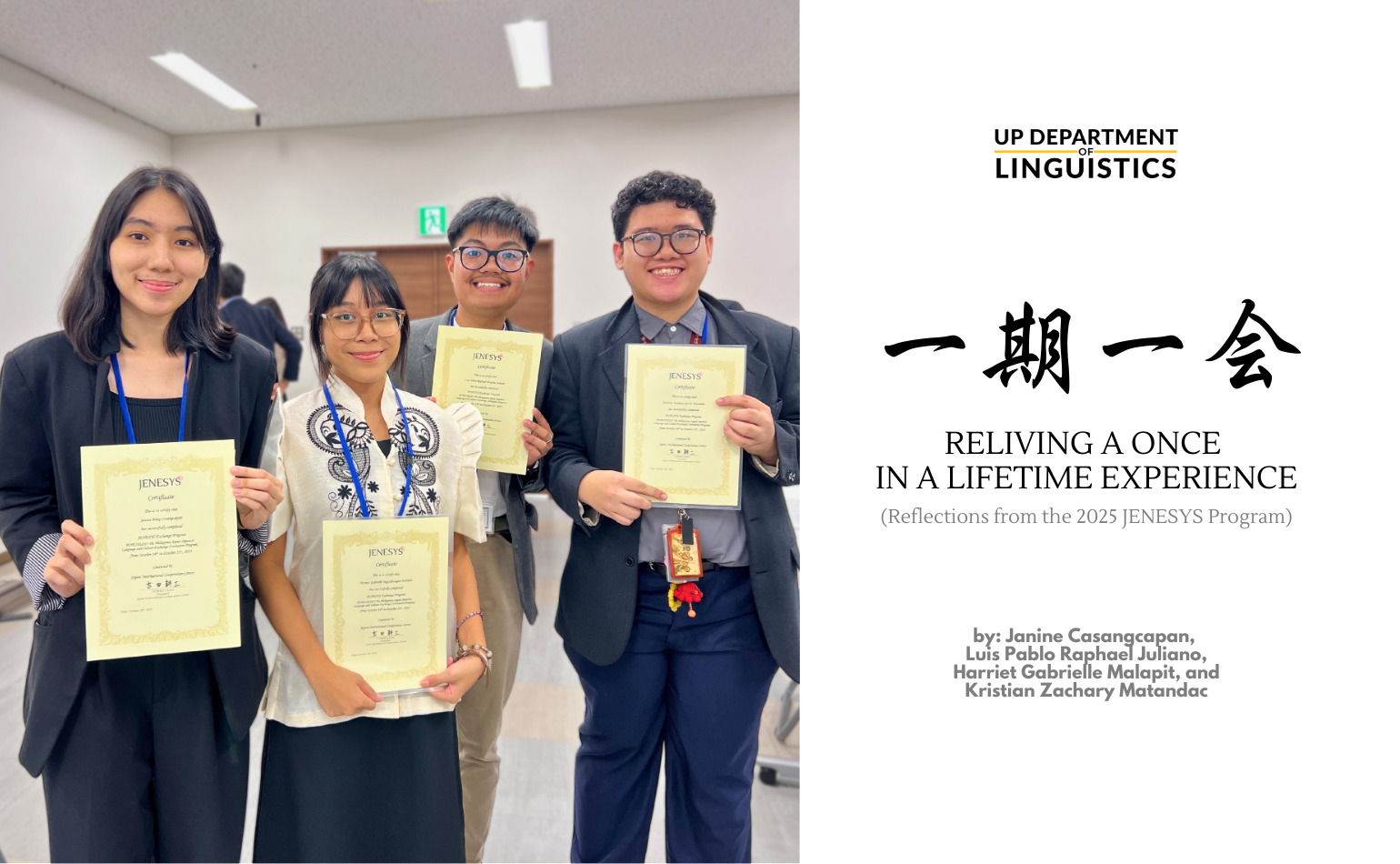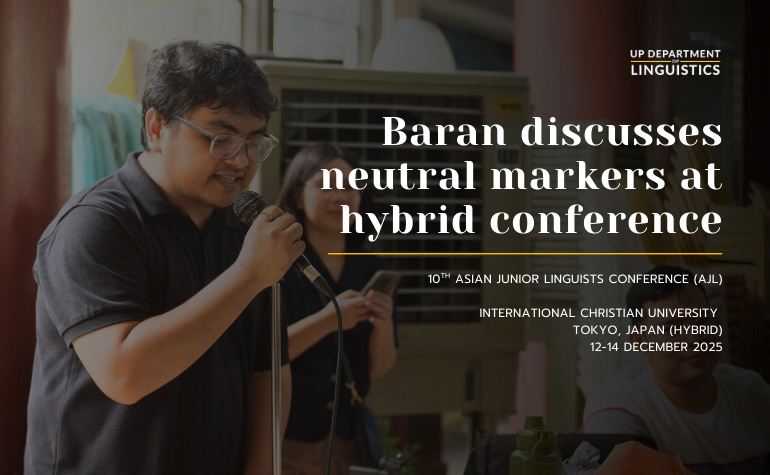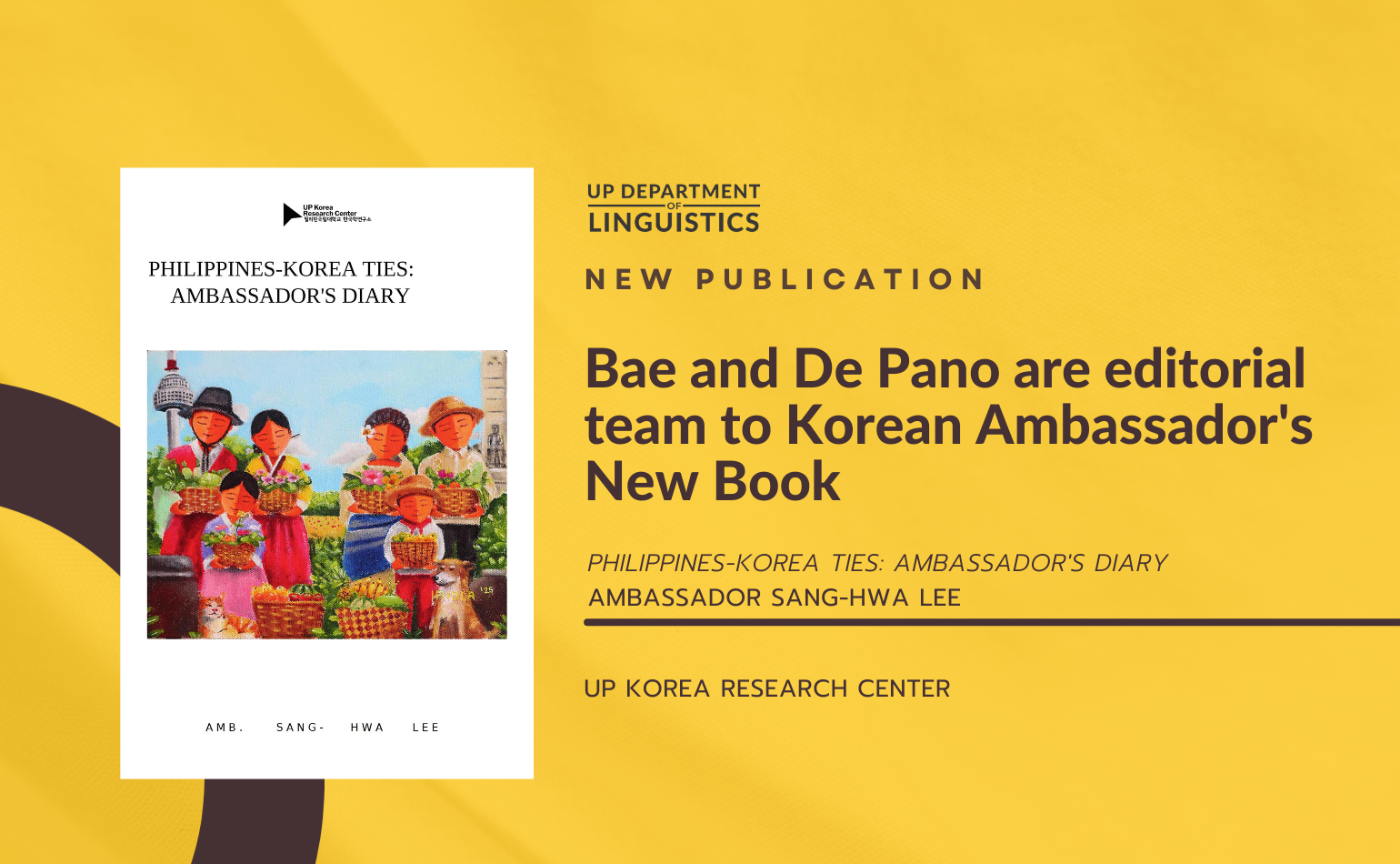
As part of the University of the Philippines (UP) College of Social Sciences and Philosophy (CSSP)‘s celebration of the 150th birth anniversary of former UP President Rafael V. Palma, Assoc. Prof. Aldrin P. Lee gave his lecture titled, “Linguistics and Boundary-Making in the Social Sciences / Linggwistiks at Pagmumuhón sa Agham Panlipunan” at the Pilar Herrera Hall last Tuesday, 22 October.
Muhon, according to Lee, is a Spanish loanword denoting a permanent property marker for land assets. The UP College of Architecture has a journal of the same name, and the word, as he explained, is a reflection in Philippine languages of the act of making boundaries.
The talk revolved around three objectives: to understand (i) how language and linguistic practices serve as essential mediums in the process of boundary-making, (ii) how linguistic and social boundaries are formed interrelatedly through linguistic ideologies that operate through semiotic processes of iconization, fractal recursivity, and erasure–- borrowing from Gal and Irvine (1995)’s work, and (iii) how semiotic instances of boundary-making processes are experienced in the Philippine context.

Its main significance, Lee described, is to provide scholars with an alternative lens for looking into linguistic variation. As results, this will highlight a collaborative space wherein linguists could work with other social scientists in investigating boundary-making as a fundamental social process, and will expand the social scientists’ outlook on variation and on the way linguistic differentiation creates social boundaries.
Language and boundaries in the social sciences
In the social sciences, a number of research areas focus on the boundaries people make: geopolitics, immigration, diaspora, indigenous people (IP)’s rights, and social spaces are some examples. Looking at language as a medium, we see that another case, zoning, exhibits boundary preservation through regulation and control. This is also contextualized in Republic Act No. 8371 (also known as “IPRA Law”), which discusses indigenous cultural communities, ancestral domains, ancestral lands, and tribal barangays.
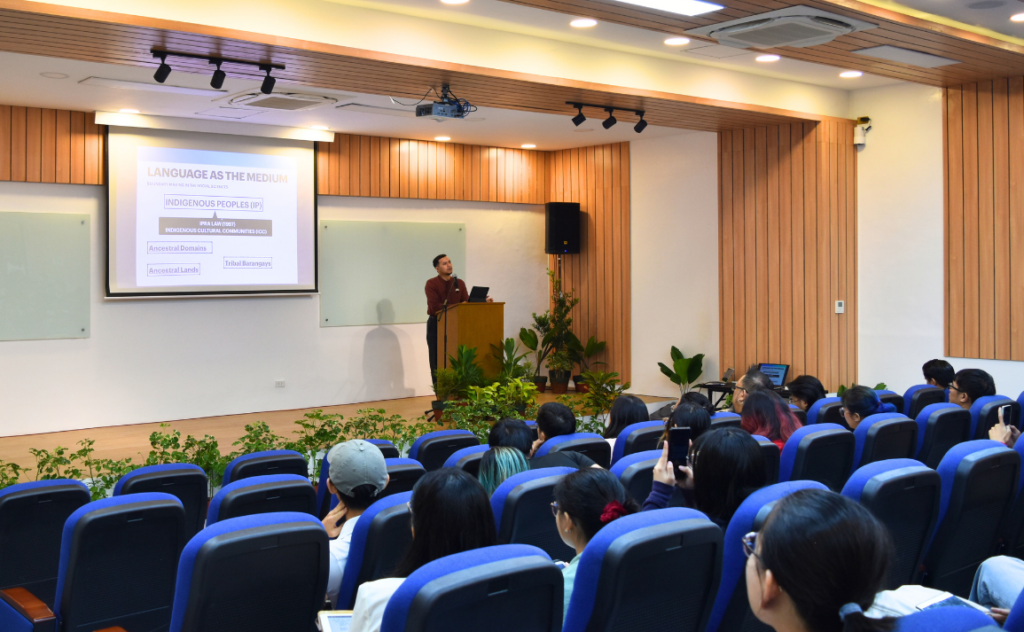
Looking at the entanglement of language and boundaries in a broader lens, linguistic differentiation is exemplified by the language-dialect dichotomy, which started as a linguistic ideology of European nation-states during the 19th century. In it, one language is set to represent the culture/territory of the nation, while dialects are relegated to the subculture/subterritory. Through this, polities were legitimized, but the process also became a tool for intra- and international boundary-making, leveraged by colonizing powers in their conquest of multilingual territories. A “unifying language” emerged as a requirement for the establishment of independence, as has been replicated in the Philippines. More extreme applications, meanwhile, can be seen in Türkiye (in the treatment of the Kurds) and Japan (in the result of the assimilation of the Ainu people).
Even the term ethnolinguistic group, according to Lee, may cause negative effects of boundary-making: as it is commonly defined as a community that shares one common language and ethnicity, other people are sidelined, leading to “unestablished varieties,” “transnational dialects,” and “mixed dialects” vis-a-vis the “one language, one culture” ideology. These variations are furthermore treated as behaviors given off by people, rather than expressions “performed, taken up, and interpreted by them.”
Linguistic ideologies, linguistic differentiation, and boundary-making
In the spirit of categorization, layers of varieties have been identified and labeled: we know the meaning of dialects, registers, and sociolects, for example. However, as Lee reiterated, these do not completely “capture social meanings, performed by the speakers themselves, that are stimuli and enactment of social differentiation.” To further investigate this, he used three semiotic processes described in Gal and Irvine (1995): iconicity, recursivity, and erasure.
“Iconicity involves picking out qualities supposedly shared by the linguistic image and the social image,” he said. “If the indexical relation appears to be causal or necessary, in the sense that such features depict or display a social group’s inherent nature or essence, then that indexical relation becomes ‘iconized.'” Registers then are products of contrast, and non-members of the group–in all of their diverse personal, social, and cultural backgrounds–are solidified into a single idea of the other: “you imagine all others as being one.”
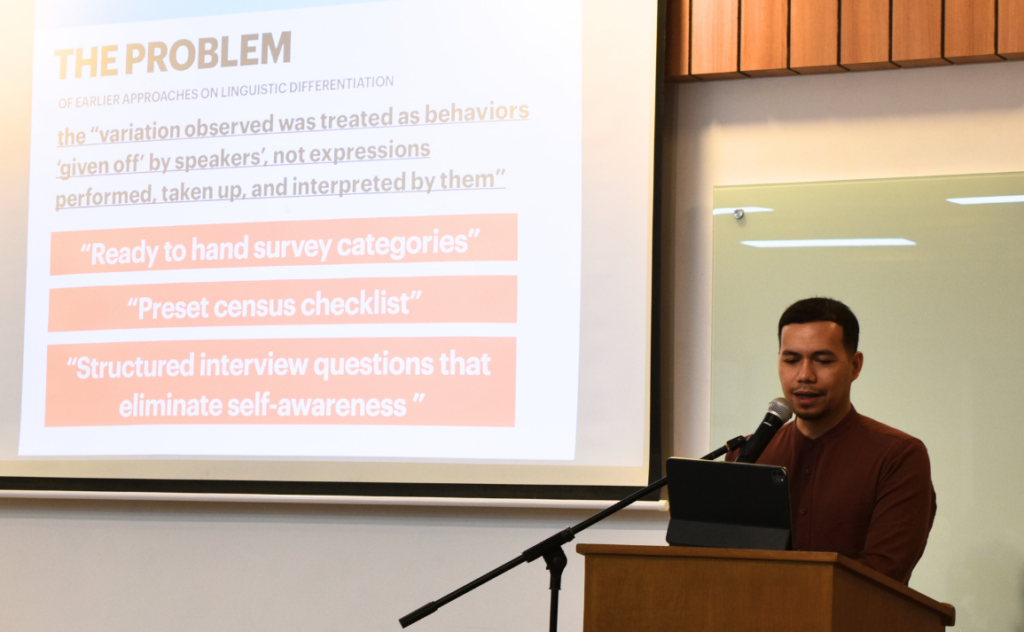
Lee demonstrated this through three case studies, all being related to the interplay of Tagalog and its English influences.
Conyo, gay lingo, and “beshie talk”
“Conyo talk (CT), as we know it, is associated with the upper- and middle- class, college-educated, urbanized Filipinos,” Lee explained as he opened the fourth part of his lecture. “[Conyo]…is used to demarcate their own space within society,” he added. It is markedly different from plain Taglish because of its contemporary usage and its alleged history of starting in a private college in Metro Manila.
Within CT, however, a new boundary has been established between two generations: “Gen Z introduced new linguistic forms to CT, proactively creating a new boundary.” He likened this divide between Gen Z and Millennial CT with how the Eastwood district evolved to adjust with the Millennials, and now Gen Z.
His next example was the difference between gay lingo (GL) and the “straight world.” According to him, GL is “a way of barring the straight world from intruding into the warm circle of gay conversation,” and should be considered with its historical, social, economic, and cultural aspects.

For the third case, he meanwhile presented “beshie talk” (BT), which he claimed as “a more open and accessible code which incorporated both of the ideological elements of both Taglish and GL.” It is often utilized, he said, in talking with other people “without coming off as rude.”
Examples in other Philippine languages
Citing Gallego (2020), Lee discussed the “networks of interaction” within the island of Babuyan Claro, focusing on the difference between the laod ‘west; mixed with Ilokano’ and daya ‘east; pure Ibatan’ varieties. He added Santiago (2023)‘s description of common expressions directed by Porohanon native speakers to their townmates who seem to have adopted the speech patterns of Cebuano as spoken in Cebu City: Magdiha-diha ka na ‘You already said diha (instead of Porohanon dira)’ and Magnaa-naa ka na ‘You already said naa (instead of Porohanon ara).’ He also mentioned Baran (2023)‘s work on the Bantayanon variety of Madridejos, where he narrated the shifting economic prestige of the two ports in the island and how it affects the language of the speakers.
These three, according to Lee, represent fractal recursivity–the process that projects an opposition that is crucial at some domain/level of relationship onto some other domains. As a fractal, it repeats on different scales, as we have seen in the high-low, proper-vulgar, and standard-non standard dichotomies. It is an employment of an “axis of differentiations” to further interactional use either in the other side of the dichotomy or onto another level of cultural field, just as observed in Philippine English(es)’s reflection of the problems that arose in American English.
The third and last semiotic process, which Lee admitted as being the most unfortunate, is erasure: a process, in simplifying the sociolinguistic field, renders some persons, activities, or sociolinguistic phenomena invisible. It is claimed to be a collateral of the boundary-making process where once a social group of a language is imagined as homogenous, any internal variation is erased, unobserved, unattended, or undocumented. “In this linguistic ideology, elements that do not fit its interpretative structure must either be ignored or transformed.”

An example of this is the notion of balig na Mëranaw ‘hilaw na Mëranaw.’ In order for a person to not be balig, both of their parents must be Mëranaw. The Binisaya as spoken by former President Rodrigo Duterte has also been mentioned, as it undermined other varieties of the language during his term in the late 2010s up to the early 2020s. All of these issues have been hastened by the ceasing of mother tongue as a language of instruction in the early years of education.
Lee concluded his lecture by a summary of the key points and significance of the talk, and said, “I am hoping that after this talk, we realize the importance of linguistics in the ontological discussions in the social sciences and as an essential medium in the process of boundary-making.”
Congratulations to all of the organizers of the event, and follow the social media pages of CSSP and the Department for updates on future events and lectures!
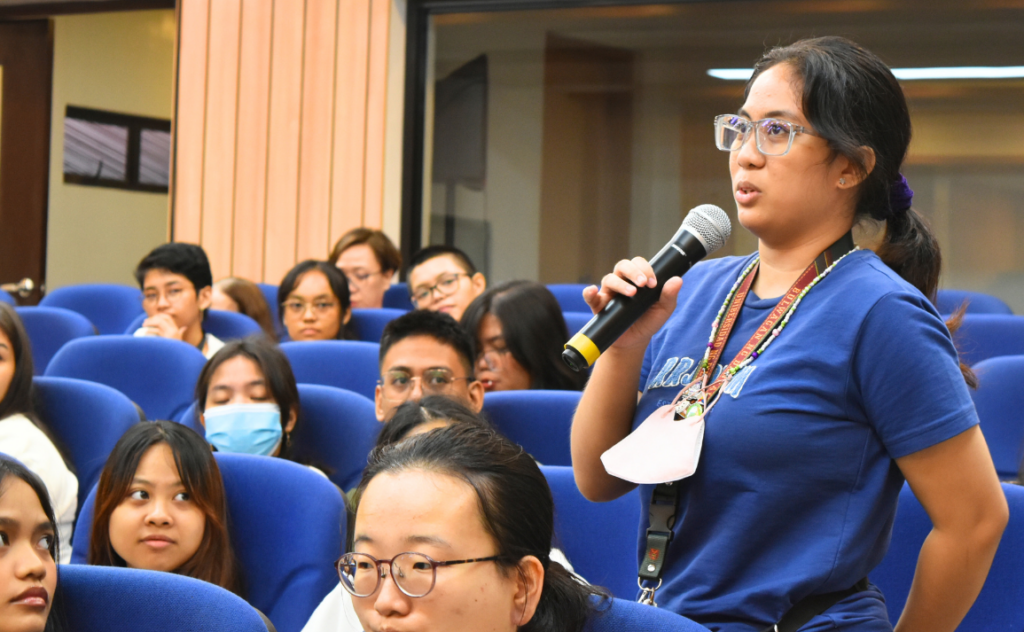
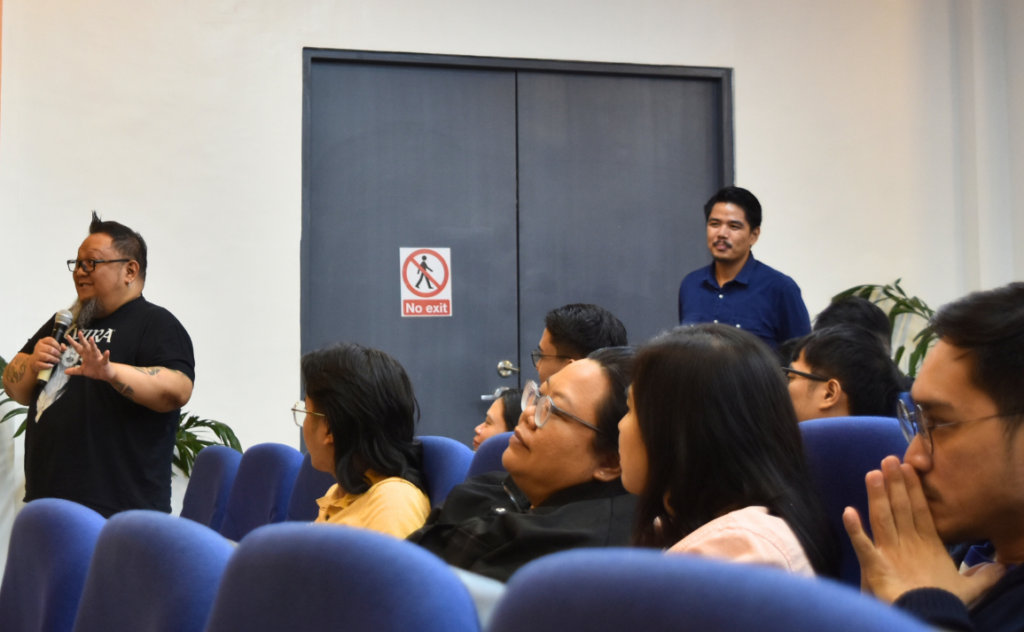
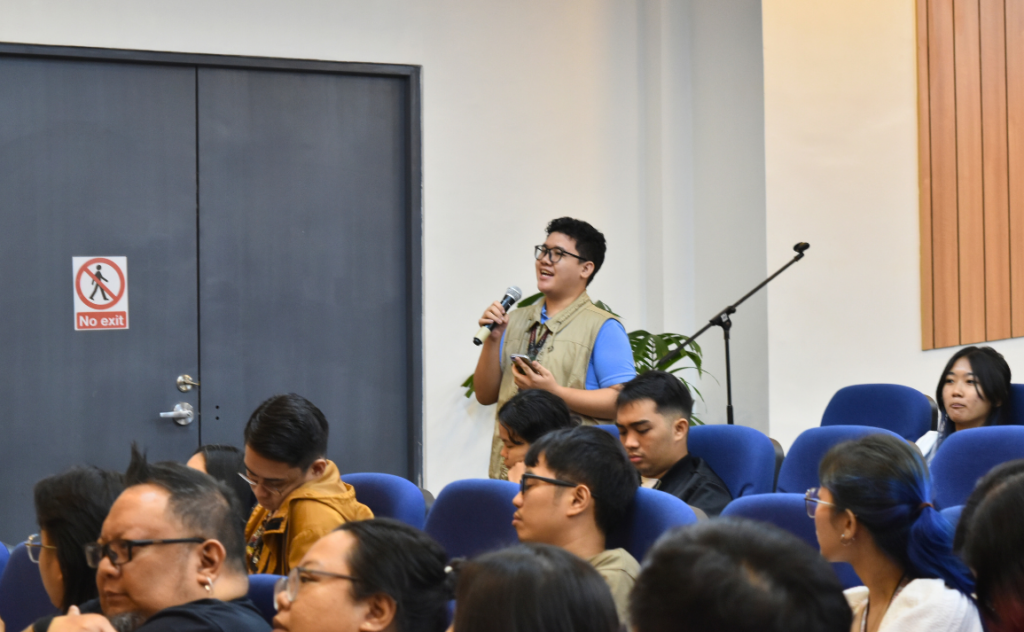
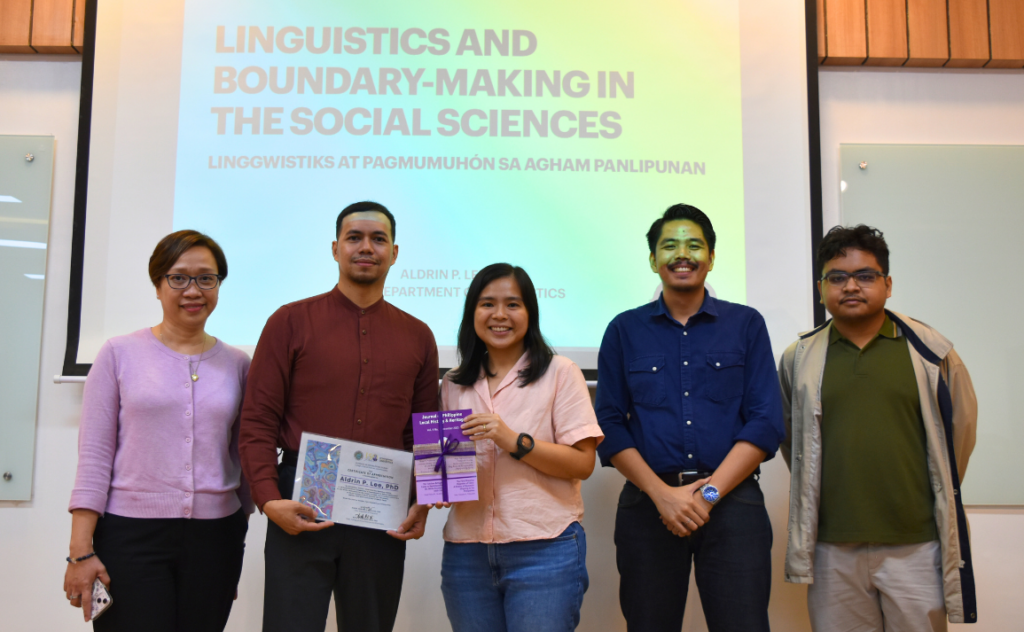
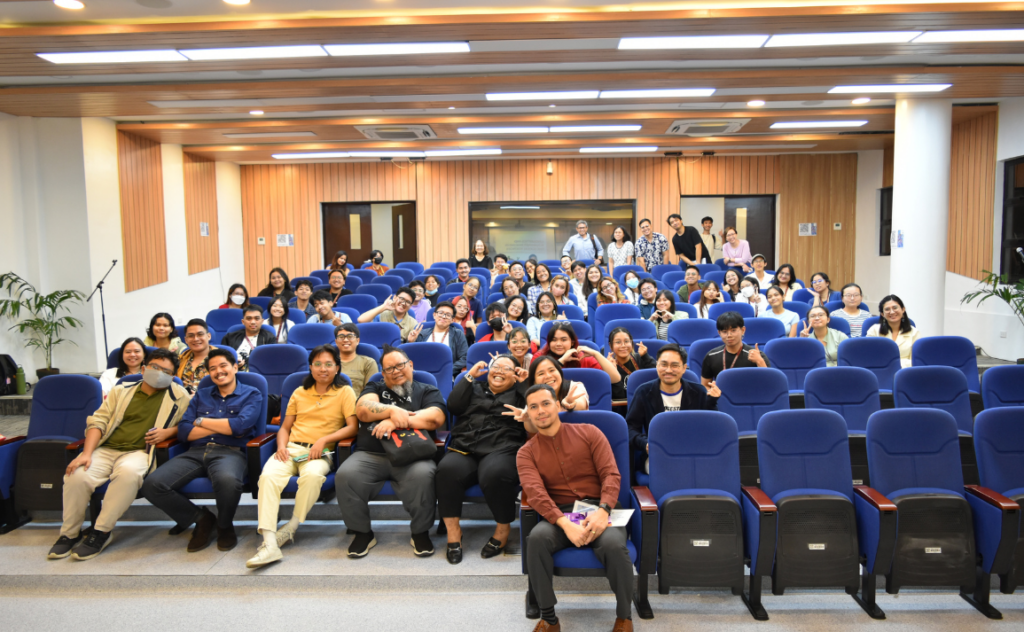
Published by John Michael De Pano

